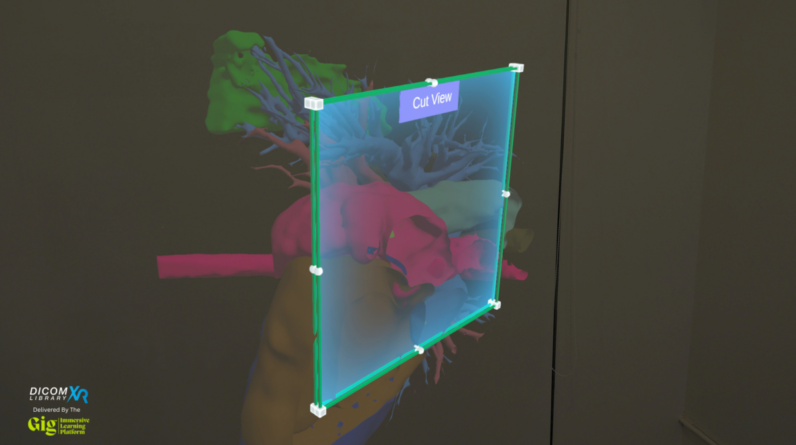
[ad_1]
A digital medical image from the GigXR and DICOM platform. Image (C) GigXR, Inc. (with permission)
The company GigXR has developed and delivered a new way to integrate medical imaging into healthcare curricula. The technology is referred to as ‘hyper-immersive’ and it is designed to empower nursing and medical students to more accurately “visualize” and interpret medical imaging scans.
Many healthcare institutions rely on conventional medical imaging and such technology has not kept up with the cutting edge technological leaps that have impacted on other scientific fields.
The new technology uses a visual representation software based on eXtended Reality, which is a high fidelity immersive technology (and which encompasses virtual reality, augmented reality and mixed reality). The design work has gone into deepening anatomy and pathophysiology knowledge to create more immersive digital experiences for learners.
In terms of digital aided learning, students are encouraged to “connect the dots” of key concepts across courses and disciplines. This is through the new application that presents a 360-degree view of structures and their relationship with each other.
The technology can be accessed from anywhere in the world and the interactive nature of the content enables a medical student to take images and cross-section, resize and rotate them as needed. Here students can view or hide abnormalities, pathologies and injuries, either individually or through collaborative learning experiences.
The medical images are drawn from computed tomography scans and magnetic resonance imaging, both standard but increasingly important technologies for medical diagnosis. Utilizing the DICOM XR library, the images are accessible from 360-degrees. This enables learners to gain an understanding of how pathology and injury manifests in diagnostic imaging. Such training helps to lay the foundations for assessing and diagnosing a real-life patient.
The library is delivered by the Gig Immersive Learning Platform enterprise. This permits instructors to curate a custom library of complementary applications. This approach fits in with a mixed-media approach to the medical curricula.
The technology adds to a growing library of holographic healthcare training, which includes HoloScenarios that can be integrated with other anatomy content. This includes HoloHuman, a 3D human cadaver made in collaboration with Elsevier.
Learners can also view accurately modelled, holographic animations of the heart, lung and kidney in the Insight Series applications prior to assessing conditions and pathologies.
Furthermore, to better evaluate and apply actual test results to clinical simulation in HoloScenarios, an application co-created with Cambridge University Hospitals NHS Foundation Trust, Michigan Medicine, and Northwest Permanente subsidiary Morlen Health.
[ad_2]
Source link






